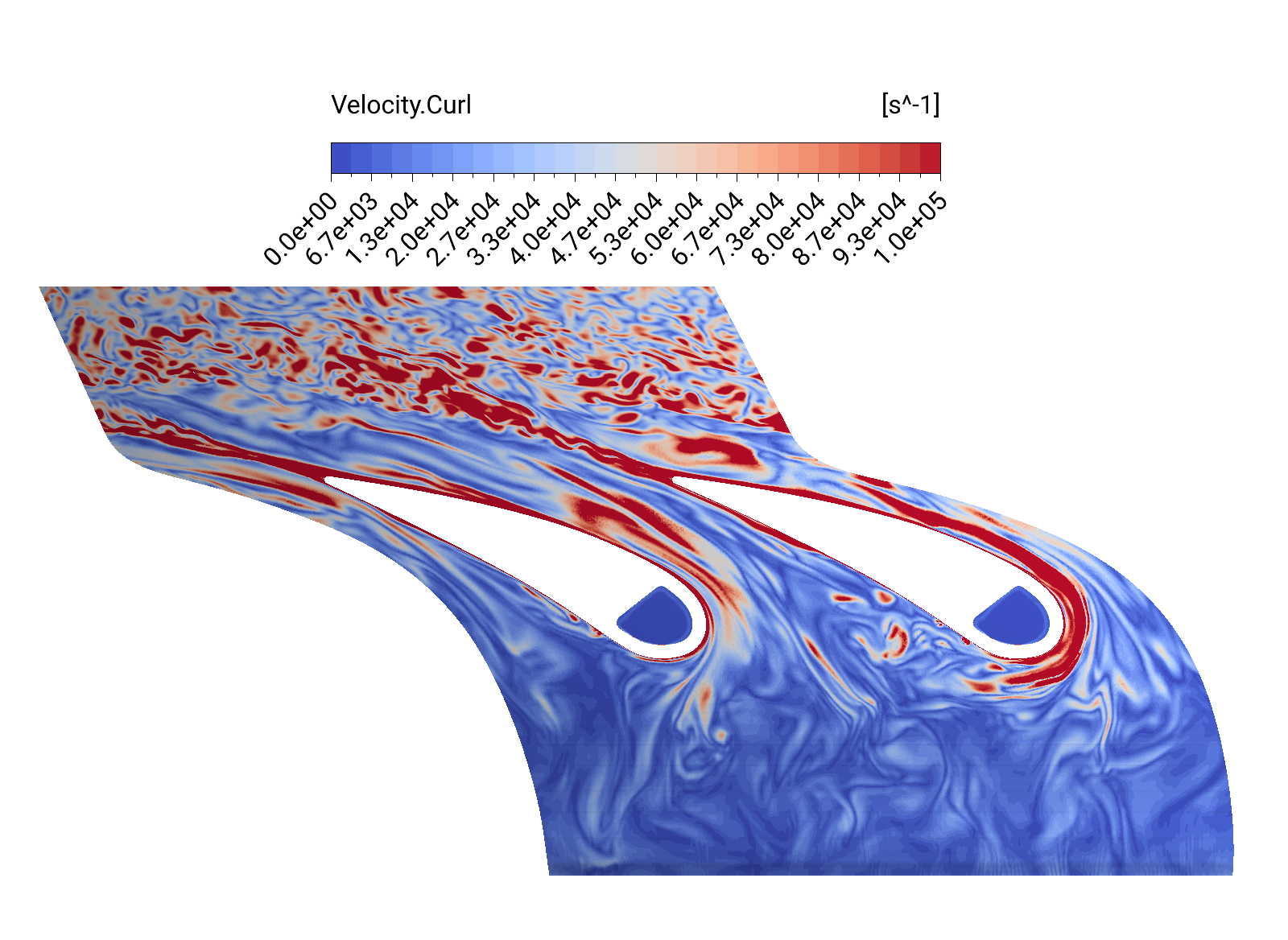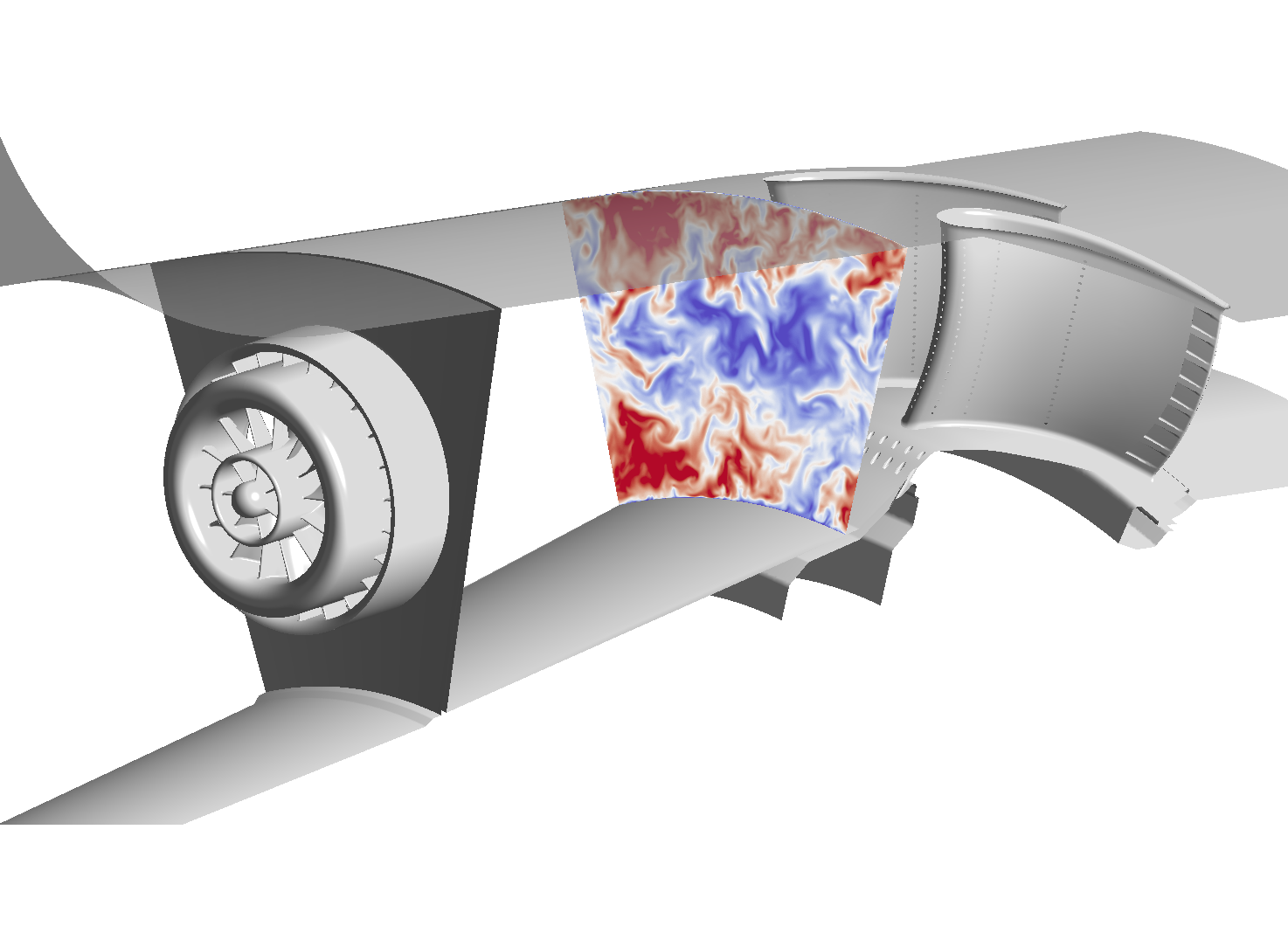Project
Unsteady 1-way coupling of combustor and high-pressure turbine
The flow conditions at the combustor turbine interface (CTI) have a significant role in the development process of modern gas turbines and turbo engines. At this location, the relevant information is transferred from the combustor to the turbine, and a deep understanding of the flow there is critical for a robust turbine design. The high-pressure turbine and especially its first stage is strongly affected by the flow in the combustor upstream. To design the turbine to specific life requirements and optimum efficiency, it is very important to understand the interaction mechanisms between the combustor and turbine and to take all the important combustor-related effects into account.
Project Details
Project term
March 1, 2022–February 28, 2023
Affiliations
TU Darmstadt
Institute
Institute of Gas Turbines and Aerospace Propulsion
Project Manager
Principal Investigator
Methods
To enable scale-resolving simulation in the turbine context, it is essential to formulate an appropriate set of time-accurate inlet boundary conditions. A novel method for the unsteady 1-way coupling of combustor and turbine was developed. This method enables Proper Orthogonal Decomposition and Fourier Series (PODFS) to compress the full unsteady snapshot data at the CTI and uses it as inlet conditions for the turbine simulation.
Results
Within this project period the PODFS method was applied to two combustor-turbine cases. First, the behavior of the first NGV of a high-pressure turbine under realistic inlet conditions has been investigated. For this purpose, the snapshot data of a combustor simulation was used in the PODFS method to create unsteady inlet boundary conditions for the NGV simulation. The simulations have been conducted on different meshes to evaluate the influence of mesh resolution on the results of the scale-resolving simulations. Also, a comparison between SAS and SBES turbulence models has been done. The main findings of these simulations are:
a. Mesh resolution has no significant effect on the aerodynamic parameter of the vanes but is affecting the thermal load of the NGV.
b. SBES turbulence model resolves more turbulence than SAS.
c. Appropriate inlet boundary conditions are very important for the thermal analysis of turbine vanes.
In the second simulation setup, the combustor simulator and the first NGV of the Large-Scale Turbine Rig (LSTR) were simulated. The integrated simulation of both in one domain could be used to generate the unsteady boundary conditions for a stand-alone turbine simulation. Furthermore, this simulation could serve as a comparison case for the stand-alone simulation. In future steps, the simulation setup needs to be improved and the simulation results can be compared with measurement data. By doing so, a comprehensive comparison with experimental data will be possible
Discussion
The developed method for the unsteady 1-way coupling of the combustor and turbine could be applied to an actual combustor-turbine case. The results are very promising and show the importance of the description of time-accurate inlet boundary conditions when doing scale-resolving turbine simulations. in a prolongation project, more simulations of the LSTR high-pressure turbine case need to be conducted to validate the method against experimental data.
Additional Project Information
DFG classification: 404-04 Hydraulic and Turbo Engines and Piston Engines
Software: ANSYS
Cluster: Lichtenberg
Publications
Jonathan Gründler, Collaborate, Innovate & Empower – Propulsion & Power for a Sustainable Future, Turbo Expo 2023 Turbomachinery Technical Conference & Exposition, Boston, MA, USA, June 26-30, 2023
 Figure1: Vortex structures in NGV passage on 50 % span height.
Figure1: Vortex structures in NGV passage on 50 % span height.  Figure 2: Velocity contour on CTI in the combined combustor-turbine simulation of research turbine LSTR.
Figure 2: Velocity contour on CTI in the combined combustor-turbine simulation of research turbine LSTR.